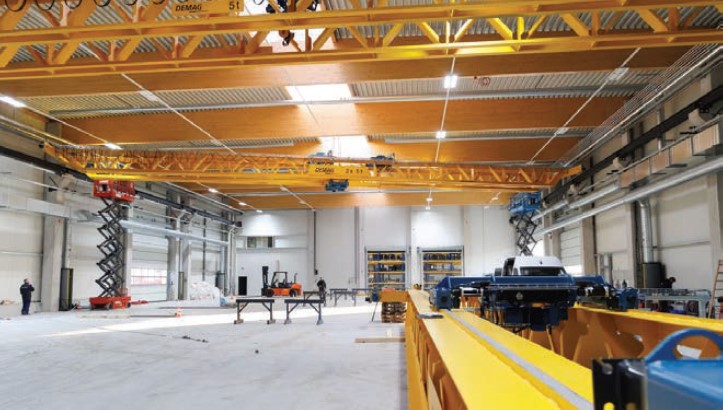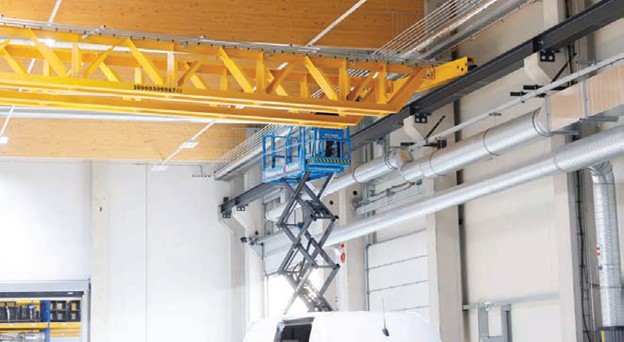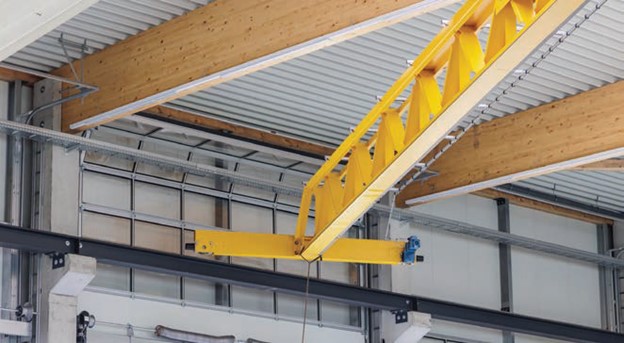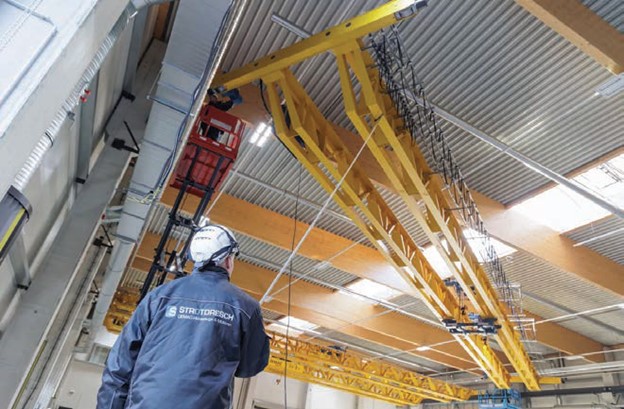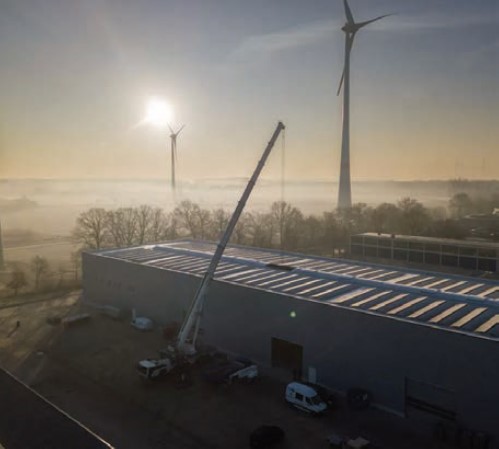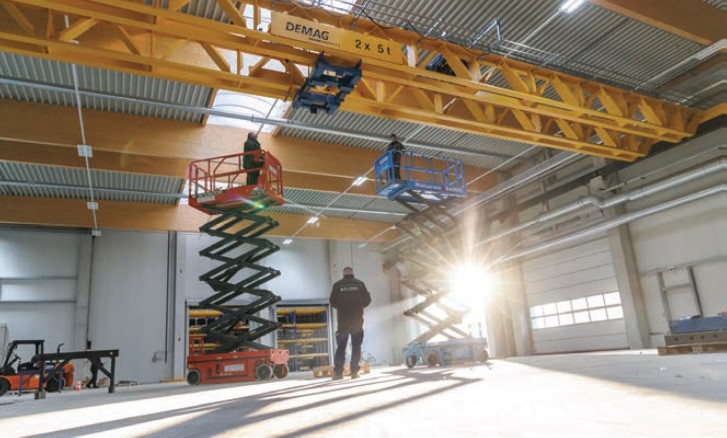Demag installs cranes for agricultural vehicles firm
18 March 2024Demag cranes have been installed for a German company that manufactures vehicles for agriculture.
From its base in Münsterland, Germany, Krampe Fahrzeugbau manufactures tailor-made vehicles for agriculture and distributes them to almost 40 countries. Besides agricultural vehicles, two workshops have also been built recently on the Krampe company premises. Managing director Robin Krampe says: “We need space – for building the bodies as a core component of the body tippers and for our customer service. By creating these new buildings, we want to achieve our ambitious goal of increasing our production capacity by 25%.”
Large and weighty components are welded and assembled in the first of the new workshops, which is for body construction and measures 3,600m2. This task is divided between a welding robot and individual workstations for manual special construction. In order to achieve a rapid throughput of up to eight vehicles per working day in the future, ergonomic considerations are key when setting up the workstations.
There was also the challenge of achieving a smooth flow of materials from station to station.
In cooperation with project engineers from Demag – which manufacturers industrial cranes, crane components and drives – certified Demag partner Aloys Strotdresch planned the entire crane system and was also responsible for the installation of crane runways and cranes; a challenging task because in some cases it worked with an external mobile crane, which moved the 30m-long crane girders through the long open rooflight.
Six double-girder V-type cranes with a span of 29.44m and a load capacity of 5.0t each travel on a common 90m-long crane runway. Up to six welded assemblies or bodies can be transported simultaneously overhead from one work step to the next and, if required, one or two workstations can also be connected to each other.
Strotdresch recommended the Demag V-type as a crane girder, as the bionic profile design – Demag says that in a similar way to bone structure, the design only utilises material where it is necessary – enables a high load capacity with a low dead weight (around 17%) and improved vibration behaviour (around 30%) compared to conventional boxsection girders.
A second reason is that those responsible at Krampe have endeavoured to give its employees a well-lit working environment, so that as much daylight as possible falls on the workplaces thanks to the 90m-long roof glazing. With six double-girder cranes, the shape of the profile makes a difference, says Demag – the V-type with its tapered diaphragm joints allows “plenty of light to pass through and thus contributes to a safe and agreeable lighting atmosphere in the new production workshops”. As soon as the daylight is no longer sufficient, LED lighting provides illumination inside the workshop.
A Demag single-girder V-type crane with a load capacity of 5.0t and a span of 20.44m was installed in the second, 800m² workshop, which is reserved for customer service. Among other things, it facilitates the handling of heavy components at the three service assembly stations.
All the cranes are equipped with Demag DRC-10 radio control systems. Up to three transmitters can be logged on per crane. For employees, this means that they can change cranes at the push of a button. The operation of individual cranes can thus be easily transferred from employee to employee. Transmitters can be swapped in seconds and are also protected against unwanted activation.
All six cranes in the larger workshop can be operated by radio in all axes (long and cross travel, hoist unit) using a Demag DRC-10 single-hand transmitter. The display on the controller shows the respective load capacity and operating status of the crane.
The optical anti-collision devices ensure safe crane operation and provide a useful convenience and assistance function for the operator. The crane electric equipment continuously monitors and intervenes automatically as soon as a programmed distance is exceeded. The crane stops or slows down depending on the customer’s requirements. In the event of a changing operating situation, the distance can be reprogrammed.
